Why we celebrate
March is Women’s History Month. A month dedicated to “commemorating and encouraging the study, observance and celebration of the vital role of women in American history,” says womenshistorymonth.gov, dedicated to Women’s History Month.
The celebration of Women’s History Month began in 1981 with Women’s History Week. Since 1988, Congress has authorized the president to proclaim March as National Women’s History Month. From 1995 on, Presidents Clinton, Bush, Obama and Trump have issued annual proclamations designating March as “Women’s History Month.” This month-long celebration allows for the United States to remember the women who helped expand and advance the country.
The Midwest has helped produce some of the most influential women in their fields, propelling them around the world and beyond. Here are some important women from the Midwest.
The Women Activists
These women courted danger throughout their lives to do what was right. These women were activists in a variety of fields, most notably, women’s rights: women empowering women.
Matilda Joslyn Gage (1826-1898)
Though originally from New York, Matilda Joslyn Gage initially spent her winters in Dakota Territory, but beginning in 1891, she wintered in Chicago, where she would eventually pass away. Before her death, Mrs. Gage met Susan B. Anthony at a 1852 women’s rights conference. Through attending women’s rights conferences and her friendship with Susan B. Anthony and Elizabeth Cady Stanton, Gage “…became a real leader in the national women’s movement with Susan B. Anthony and with Elizabeth Cady Stanton,” says historian Angelica Carpenter.
All four of Gage’s adult children moved to the Dakota territory. While visiting them, Mrs. Gage championed women’s rights. She specifically focused on the right to vote, but it was not made a part of the two new constitutions of North and South Dakota in her lifetime.
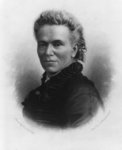
In 1891, her youngest daughter Maud Gage Baum and her daughter’s husband moved to Chicago. “When she got old and sick she spent more than just winters with the Baums, she spent whole years. So from 1891 to 1898 she was in Chicago quite a bit,” says Carpenter. However, Gage’s activism did not stop simply because she got old. Carpenter notes, “While living in Chicago she published a book, called Women, Church, and State that showed how government and churches had oppressed women for centuries, and [it] was published by a radical Chicago publisher.”
Unfortunately, Gage died 22 years before the passing of the 19th Amendment allowing women the right to vote. Her untimely death lead to Gage’s contributions missing from most historical accounts.
Yet for those like Carpenter, whose book, Born Criminal: Matilda Joslyn Gage, Radical Suffragist writes Gage back into the picture, Matilda Joslyn Gage continues to be an example of the early activists for women’s rights.
“She believed in equal rights for everybody, men, women, black, white,” says Carpenter. “Matilda thought everybody should have equal rights, everybody.”
For more information on Matilda Joslyn Gage, contact Angelica Carpenter.
Madam CJ Walker (1867-1919)
“Madam Walker really represents what was happening with women before women had the right to vote, and what was happening with African Americans after the emancipation proclamation,” says A’lelia Bundles, historian and Madam Walker’s great great granddaughter.
Born Sarah Breedlove two years after The Civil War, Walker began her life with the goal of achieving a better one. She would succeed in ways not thought possible in the time period, especially for a black woman. Walker started her own business that continues to this day; she was an independent woman who had to travel throughout the country to get her business started. Eventually, Madam Walker would become “…a pioneer of what is now a multi-million dollar international cosmetics and hair care company,” says Bundles.
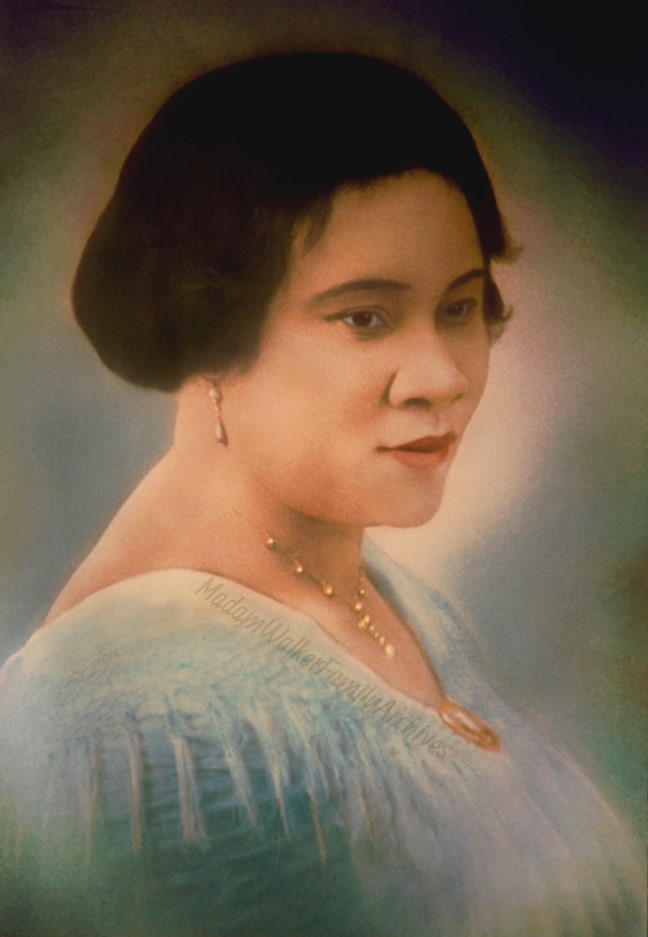
When Walker moved to Saint Louis, she joined a community in the Saint Paul Methodist Episcopal church that helped her succeed. “You can see that while she became extremely successful there were people along the way, there were people who intervened and helped push her along the path. Once she started her company, she was soaring on her own. But she had had help in the beginning,” says Bundles. “I think many times people don’t realize the strength of those alliances and the assistance that women gave to each other.”
Madam CJ Walker created a brand that gave women opportunities they would not otherwise have. “She knew how difficult her life had been. She was a washer woman until she was 38, and she needed to raise her child and she wanted to have more opportunities. She was empowering women,” says Bundles.
In the process of creating a whole new industry, Madam Walker empowered women. She cared for more than just her company. “She said at her national convention, ‘I want others to look at us that we care not just about ourselves, and as Walker Agents your first duty is to humanity.’ She wanted them to be able to have homes and educate their children, but she also wanted them to be contribute to charity and be politically active. At the end of the convention they sent a telegram to Woodrow Wilson urging him to make lynching a federal crime,” says Bundles. Madam Walker became a voice for those who needed someone with power to stand up for them.
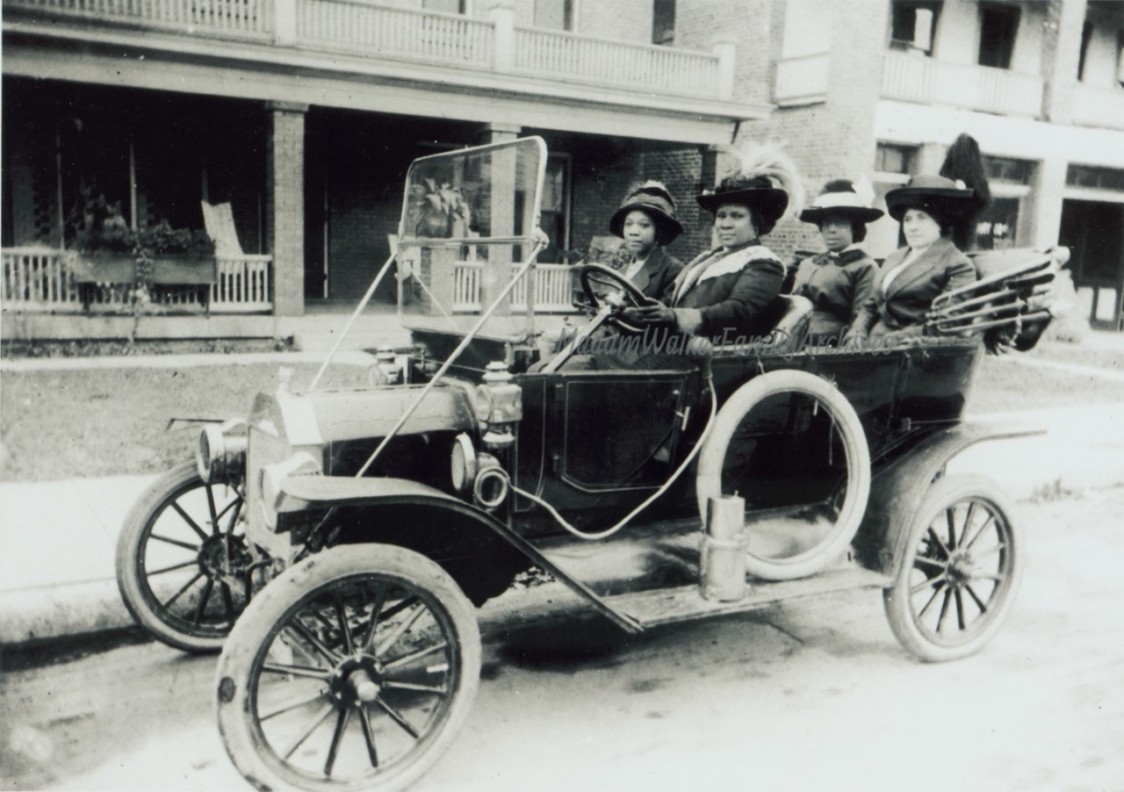
“She could have just said I’m going to protect myself and not gotten involved. There was some danger to her to speak out,” says Bundles. “She wanted to go to France and she applied for a passport and was denied by the Woodrow Wilson Administration for being politically outspoken. She took some risk but she thought that was the right thing to do. It takes courage.”
For more information on Madam CJ Walker contact A’Lelia Bundles.
The “New” Women
These are women ahead of their time. They break the mold of what it meant to be a woman in their era: allowing for women to change society.
Margaret Brown (1867-1932)
Margaret Brown was born and raised in Hannibal, Missouri, but she had always wanted to travel. By the time she was 18, Brown had followed two of her siblings to Leadville, Colorado. There she would meet her husband, JJ, with whom she would raise two children and eventually live a life of luxury.
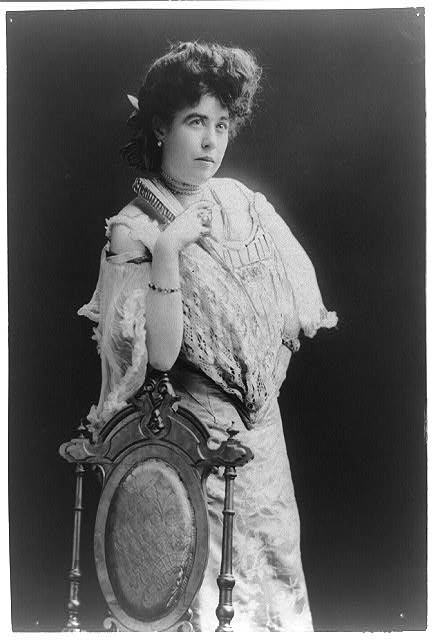
After her move to Leadville and soon after her marriage, Margaret Brown began her activism. “She was a member of the women’s club, she was helping the poor [and] she was involved in the church,” says Erin Smither, the senior archivist at the Springfield Research Center for the State Historical Society of Missouri.
Unfortunately, with the repeal of the Sherman Silver Purchase Act in 1893, Leadville went into an economic depression. Fortunately for the Browns, JJ was able to literally strike gold in a previously impassable mine for the mining company where he was employed as a foreman. It was one of the largest gold deposits in history.
After being rewarded for this find, the Browns moved to Denver. “Once they got there and she had money and means she set out to make herself a better person. Educating herself, they had a box at the opera. She had a vocal coach to try to help her speak properly. She took foreign languages, at the end I think she could speak six different languages,” says Smither. Margaret Brown not only bettered herself but continued her activism. “She was very active in Catholic charities. She [supported] orphanages. She worked with a gentleman on establishing Juvenile Court.”
Yet she did not forget where she came from. Brown was the daughter of Irish immigrants, “…and the Irish were treated very terribly at this time,” says Smither. “And so she really cared about how immigrants were treated and she cared about how workers were treated. And this is a major point of tension between her and her husband.”
While she and her husband separated, they did not divorce. She traveled and they lead separate lives. This was how she found herself on the RMS Titanic. “A lot of her family didn’t even know that she was on the ship. She had been on a trip with her daughter. She had been told that her grandson, Lawrence Palmer Jr., was sick and she booked passage on the next ship. Her daughter, Helen decided to stay in Europe,” says Smither.

Photo Credit: Library of Congress, Prints & Photographs Division, NYWT&S Collection, [reproduction number, LC-USZ62-116092]
When the Titanic sank, Brown stepped into action, famously getting into arguments with Robert Hitchens, the ship’s quartermaster, who happened to be in the same lifeboat. But it was on the RMS Carpathia, one of the ships to respond to the RMS Titanic’s distress signal, where Margaret Brown really sprang into action. Examples Smither notes include raising money for the passengers and making sure every worker of the Titanic had a job to return to. But most importantly, “she stayed on board the Carpathia overnight because there were women on the boat and they didn’t have anyone to meet, didn’t know who they were meeting, and they were just inundated with reporters. Afterwards she set herself up in the Ritz-Carlton where survivors could come and she would help them find their families or whoever they were supposed to be meeting. Some of these women, the information went down with their husbands.”
Though the Titanic is what made Margaret Brown famous, the tabloids and rumors of the time are what stuck. “The stories that were told about her, the money in the oven, that her floor was made of silver dollars, and she was once asked why do you let people tell this story and she said, ‘well it’s a good story.’ She didn’t try to stop the rumors or the stories. In some ways she was amused by it,” says Smither.
Nonetheless, Margaret Brown “…was way ahead of her time. In a lot of ways she didn’t behave like women were expected to behave. Traveling alone on the Titanic was even not the norm. You were supposed to have an escort or a chaperone.. She did [and succeeded at things that women often didn’t do.] I think she believed that any women was capable of whatever a man was. And she was showing that through the way she lived her life,” says Smither.
For more information on Margaret Brown contact Erin Smither or the State Historical Society of Missouri.
Willa Cather (1873-1947)
Originally wanting to be a surgeon, Willa Cather discovered a love for words while studying at the University of Nebraska-Lincoln. “She writes an Essay on Carlyle. One of her professors arranges to have it printed, and she sees her work in print for the first time and by all accounts she just falls in love with the idea of having her work published,” says Tracy Tucker, the education director and archivist at the Willa Cather Museum in Red Cloud, Nebraska.
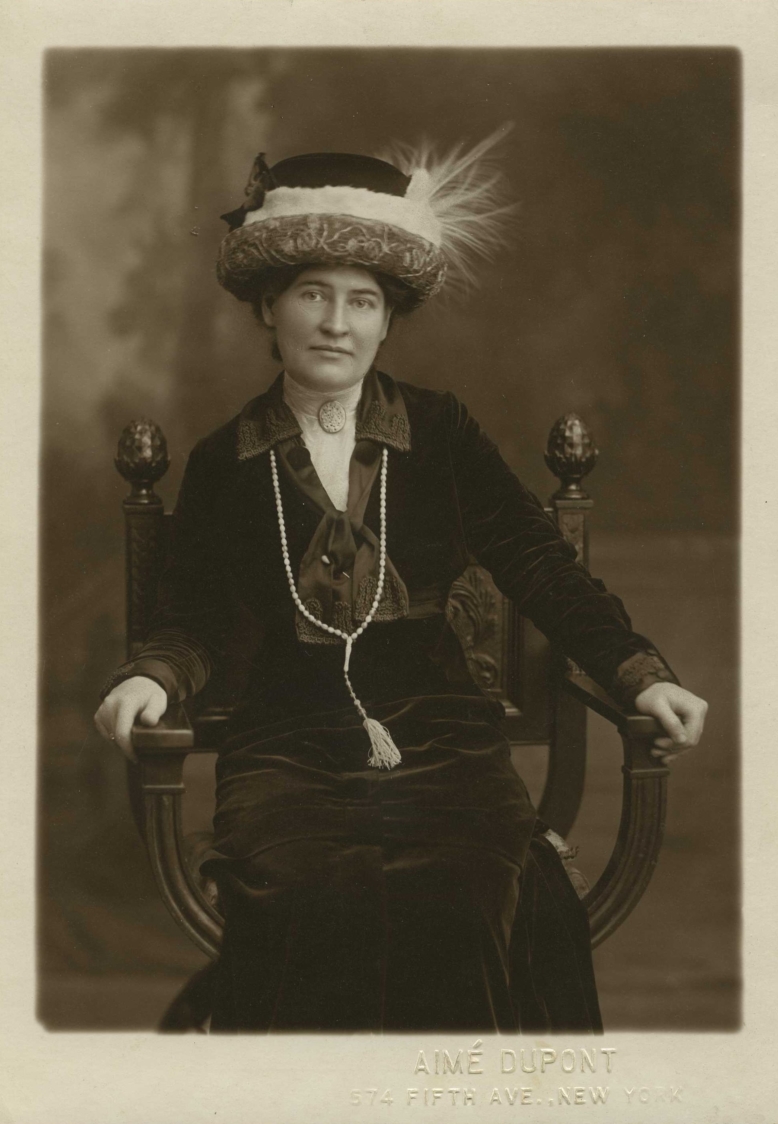
After receiving a degree in English, Cather held a variety of writing jobs, including writing for Home Monthly and working as a high school English teacher. Neither position offered her much time to pursue her writing. Eventually she would end up writing for McClure’s, a popular illustrated monthly magazine, as an editor.
“After she had been [at McClure’s] for about six years she realized that if she was ever going to get her writing career off the ground she needed to dedicate herself to it full time. So she steps back from McClure’s magazine,” says Tucker, “And began to publish her first novel in 1912. Then all the rest of the novels followed after that: 12 novels.” Cather also wrote a number of short stories and non-fiction work. Eventually, she won a Pulitzer prize among many other honors.
Cather broke the mold of what was acceptable to write about; she wanted to demonstrate that a story could happen anywhere. “She had looked for stories that she had told of the kind of people she remembered growing up in Red Cloud, and she couldn’t find them. So she wrote O Pioneers!,” Tucker says.
Cather was a private person, but because of her
For more information on Willa Cather, contact the Willa Cather Museum.
Towards the Future
The days of the frontier and the Titanic seem long ago, but the women of the Midwest continue to make history. No matter where they travel or how far away from earth they go, these midwestern women want people to know that no matter who you are, no matter what circumstance or background you come from, you can achieve greatness.
Gwendolyn Brooks (1917-2000)
Although she died in 2000, Gwendolyn Brooks remains an icon for the literary field.
Born in Topeka, KS, Brooks’ family moved to Chicago when she was young. She published her first poem at age 13, and by the time she was 17, she was publishing poems frequently in the Chicago Defender.
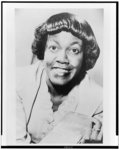
After college and work for the NAACP, her career began to take off. She was the first African American to win a Pulitzer Prize. The Pulitzer came for her 1949 work Annie Allen, a book dedicated to portraits of the Black urban poor.
Her later work was even more political. Brooks’ work showed, “an intense awareness of the problems of color and justice,” says National Observer contributor Bruce Cook, according to the Poetry Foundation.
Brooks, as Kenny Williams from Modern American Poetry, says, “has taught audiences that poetry is not some formal activity closed to all but the most perceptive. Rather, it is an art form within the reach and understanding of everybody–including the lowliest among us.”
For more information on Gwendolyn Brooks visit the Poetry Foundation Website.
Dr. Peggy Whitson (1960-)
According to the official NASA biography of Dr. Whitson, she “flew on Expedition 50/51 and participated in four spacewalks, bringing her career total to ten spacewalks. With a total of 665 days in space, Whitson holds the U.S. record, placing eighth on the all-time space endurance list.”
Originally from Mt. Ayr, IA, Dr. Whitson received a Bachelor of Science in Biology/Chemistry from Iowa Wesleyan College in 1981 and a Doctorate in Biochemistry from Rice University in 1985.
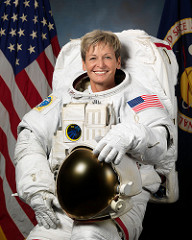
Dr. Whitson knew from a young age that she wanted to be an astronaut, according to a recent interview with CBS this morning. With supportive parents and a drive to do whatever it took, Dr. Whitson became the first female commander on the International Space Station. She would also be the female chief of the astronaut office, gaining the position in 2009.
An inspiration for every child in a rural area who thinks they’re stuck because of where they live, Dr. Whitson is proof that working hard means anyone can shoot for the stars.
For more information on Dr. Peggy Whitson, look at the NASA website.
Celebrate
When we celebrate Women’s History Month, we celebrate these women, the women of the past, the women of the present and the women of the future. Women of the Midwest will continue making strides in every field, helping to empower each other and those around them. This month reminds us to not forget who we come from and that women can break the mold placed around them to become someone the world must listen to.
For more information on Women’s History Month visit this Link.
Photos used with permission of Library of Congress, NASA,Willa Cather Archives, and the Madam Walker Family Archives/A’Lelia Bundles.

